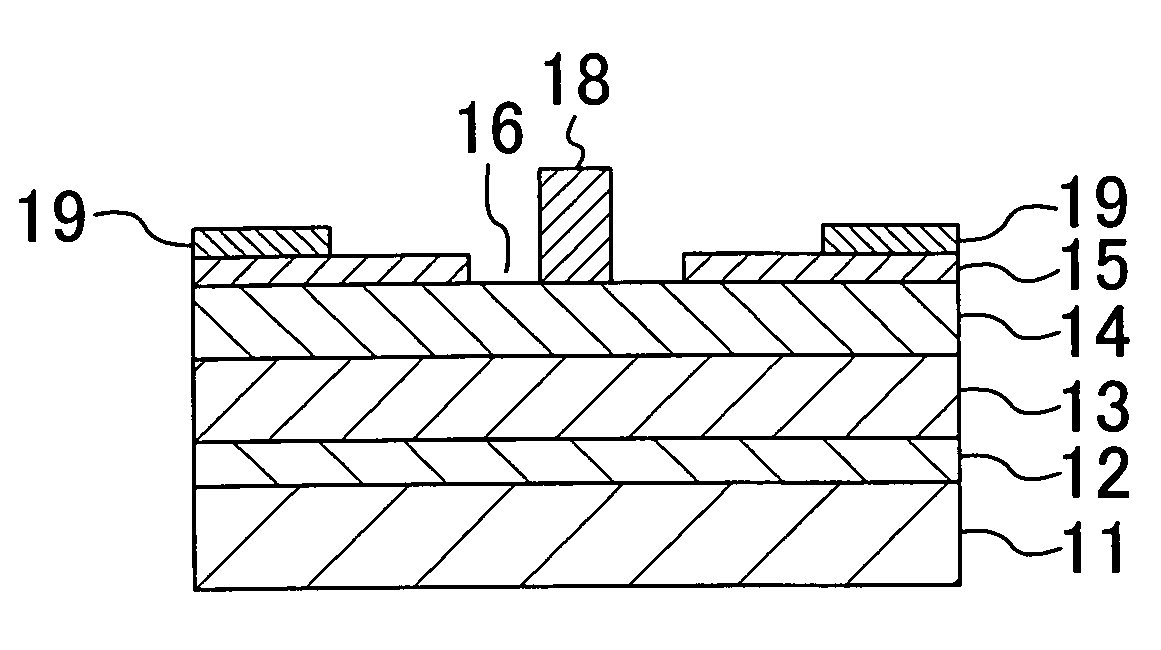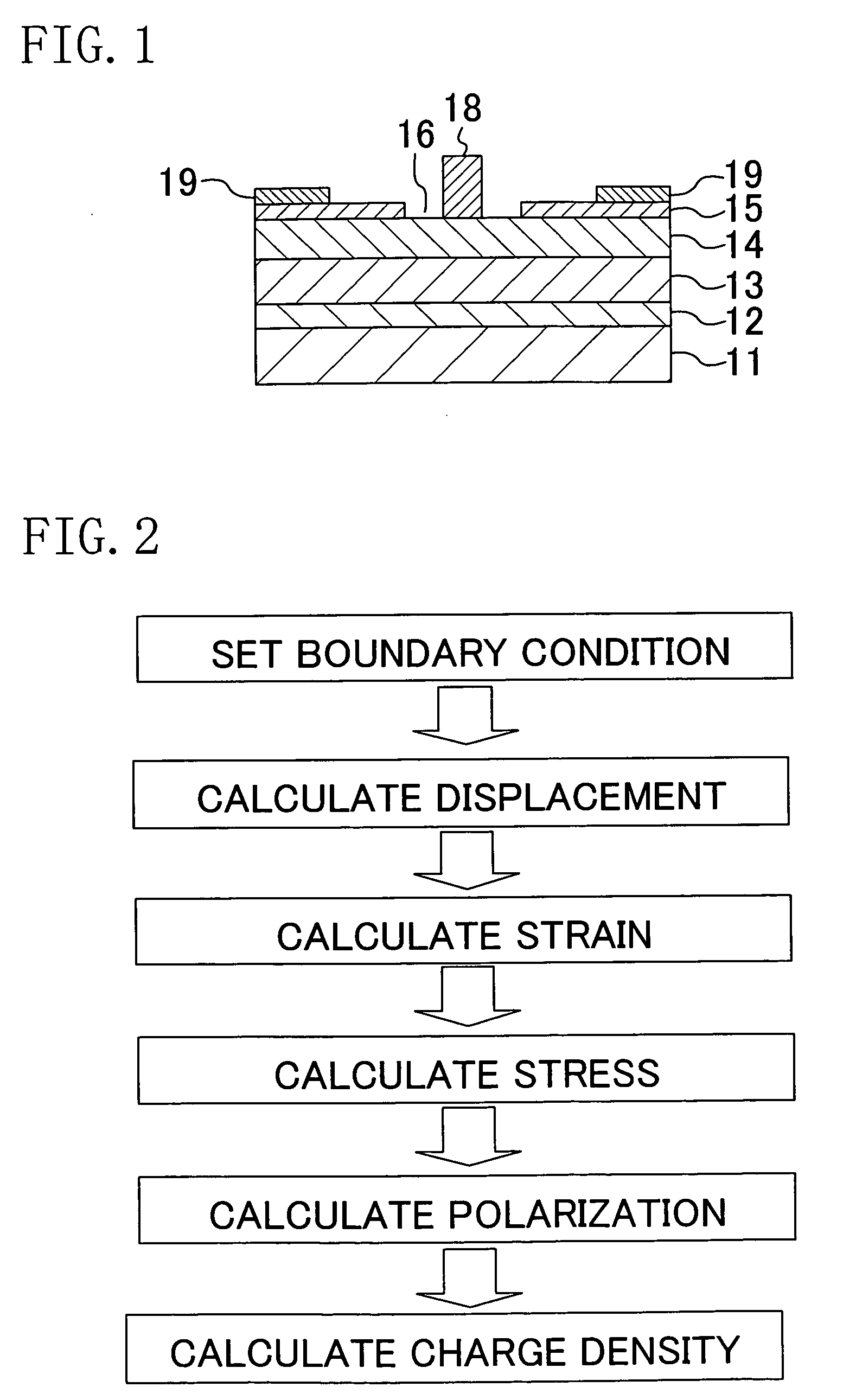Field effect transistor
a field effect transistor and transistor technology, applied in the field of field effect transistors, can solve problems such as parasitic resistance, and achieve the effects of suppressing stress working between the second semiconductor layer and the first semiconductor layer, small parasitic resistance, and effective reduction of stress applied by the second semiconductor layer to the first semiconductor layer
- Summary
- Abstract
- Description
- Claims
- Application Information
AI Technical Summary
Benefits of technology
Problems solved by technology
Method used
Image
Examples
embodiment 1
[0042]Embodiment 1 of the invention will now be described with reference to the accompanying drawings. FIG. 1 shows the cross-sectional structure of a field effect transistor (FET) according to Embodiment 1. As shown in FIG. 1, a buffer layer 12 made of aluminum nitride (AlN) or gallium nitride (GaN) grown at a low temperature is formed on a substrate 11 of sapphire. An active layer 13 of GaN, a barrier layer 14 of Al0.26Ga0.74N and a capping layer 15 made of a GaN layer doped with an n-type impurity and having lowered resistance are successively formed in this order in the upward direction on the buffer layer 12.
[0043]A gate recess portion 16 for exposing the barrier layer 14 therein is formed in the capping layer 15, and a gate electrode 18 is formed on the exposed portion of the barrier layer 14 in the gate recess portion 16. Two ohmic electrodes 19 respectively working as a source electrode and a drain electrode are formed on the capping layer 15 on both sides of the gate electr...
embodiment 2
[0058]Embodiment 2 of the invention will now be described with reference to the accompanying drawing. FIG. 7 shows the cross-sectional structure of an FET according to Embodiment 2 of the invention. In FIG. 7, like reference numerals are used to refer to like elements used in FIG. 1 so as to omit the description.
[0059]As shown in FIG. 7, in the FET of this embodiment, a capping layer 15 has a smaller thickness at a gate recess side end thereof than beneath an ohmic electrode 19. In other words, the thickness of the capping layer 15 is changed to be reduced in a stepwise manner toward the gate recess side end. The stress applied by the capping layer 15 to a barrier layer 14 is collected beneath a portion where the thickness of the capping layer 15 is changed, and the stress is larger as the change in the thickness of the capping layer 15 is larger. Accordingly, when the thickness of the capping layer 15 is changed in a stepwise manner, the stress applied by the capping layer 15 to th...
embodiment 3
[0068]Embodiment 3 of the invention will now be described with reference to the accompanying drawings. FIG. 9 shows the cross-sectional structure of an FET according to Embodiment 3 of the invention. In FIG. 9, like reference numerals are used to refer to like elements shown in FIG. 1 so as to omit the description.
[0069]As shown in FIG. 9, as a characteristic of the FET of this embodiment, a portion of a capping layer 15 corresponding to a sidewall of a gate recess portion 16 is nonlinearly reduced in the thickness in a downward convex curve so that the thickness change can be smaller toward a gate recess side end thereof. The FET of this embodiment may be regarded as one FET of Embodiment 2 where the thickness of the capping layer is changed in infinite stages.
[0070]The stress collection at the gate recess side end of the capping layer 15 is larger as an angle θ between the side face of the gate recess side end of the capping layer 15 and the top face of a barrier layer 14 is close...
PUM
 Login to View More
Login to View More Abstract
Description
Claims
Application Information
 Login to View More
Login to View More - R&D
- Intellectual Property
- Life Sciences
- Materials
- Tech Scout
- Unparalleled Data Quality
- Higher Quality Content
- 60% Fewer Hallucinations
Browse by: Latest US Patents, China's latest patents, Technical Efficacy Thesaurus, Application Domain, Technology Topic, Popular Technical Reports.
© 2025 PatSnap. All rights reserved.Legal|Privacy policy|Modern Slavery Act Transparency Statement|Sitemap|About US| Contact US: help@patsnap.com



